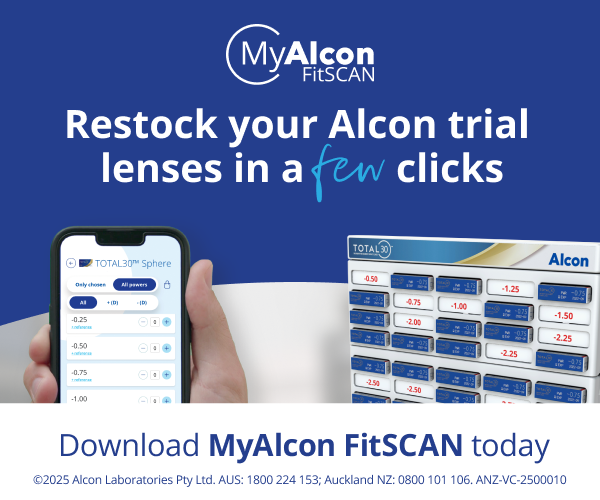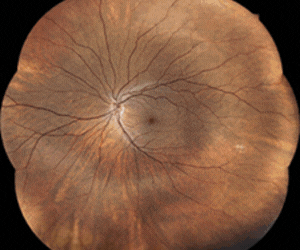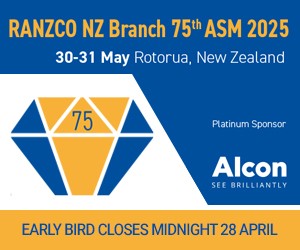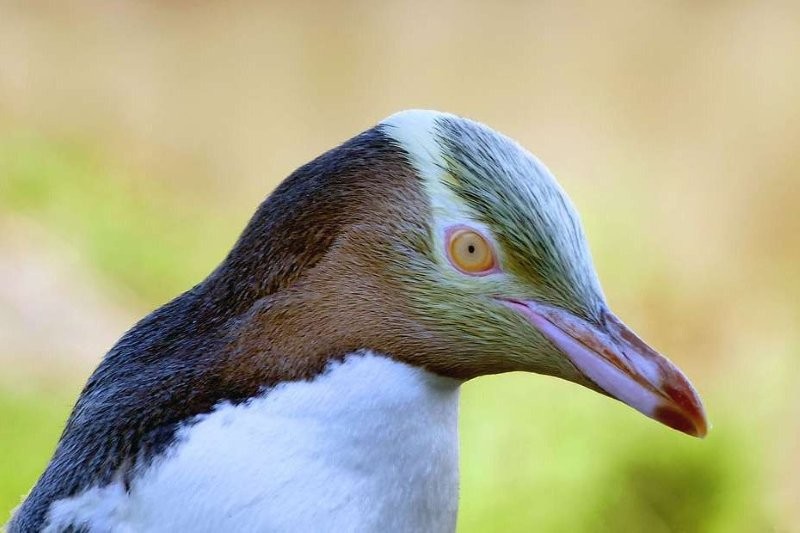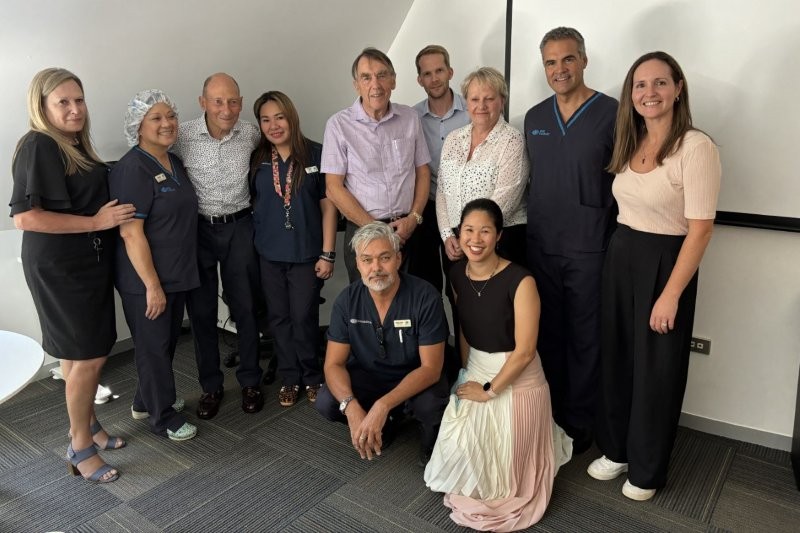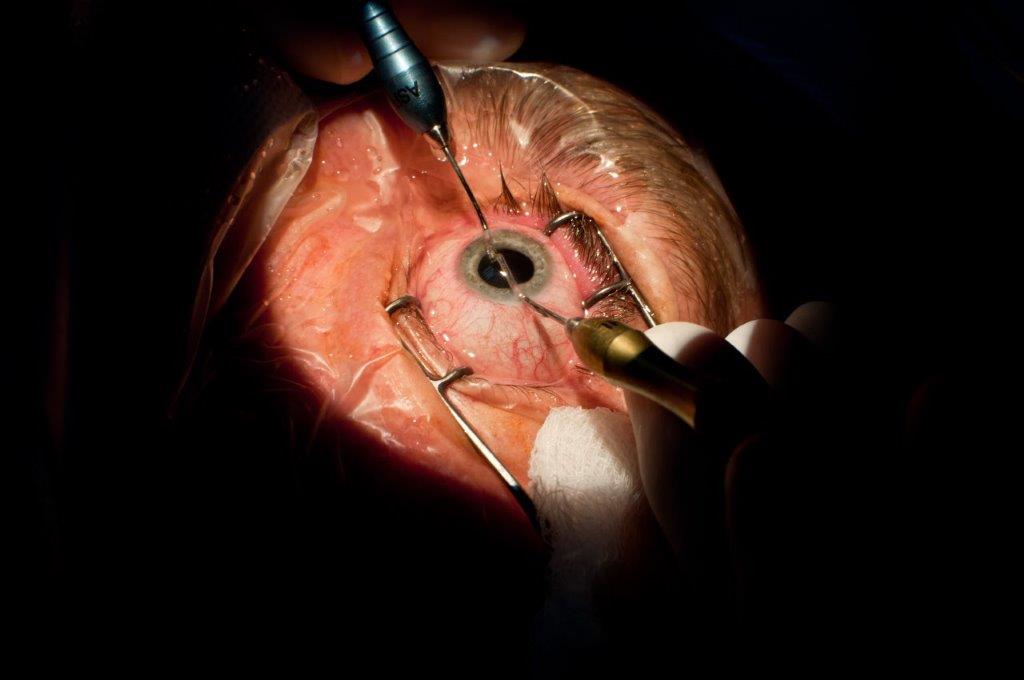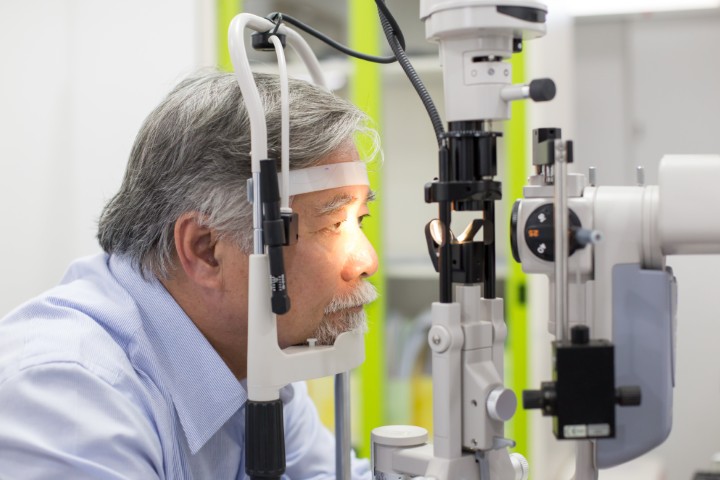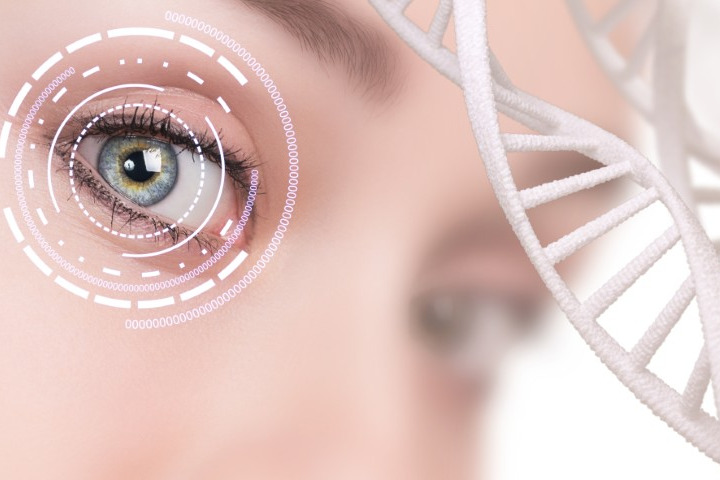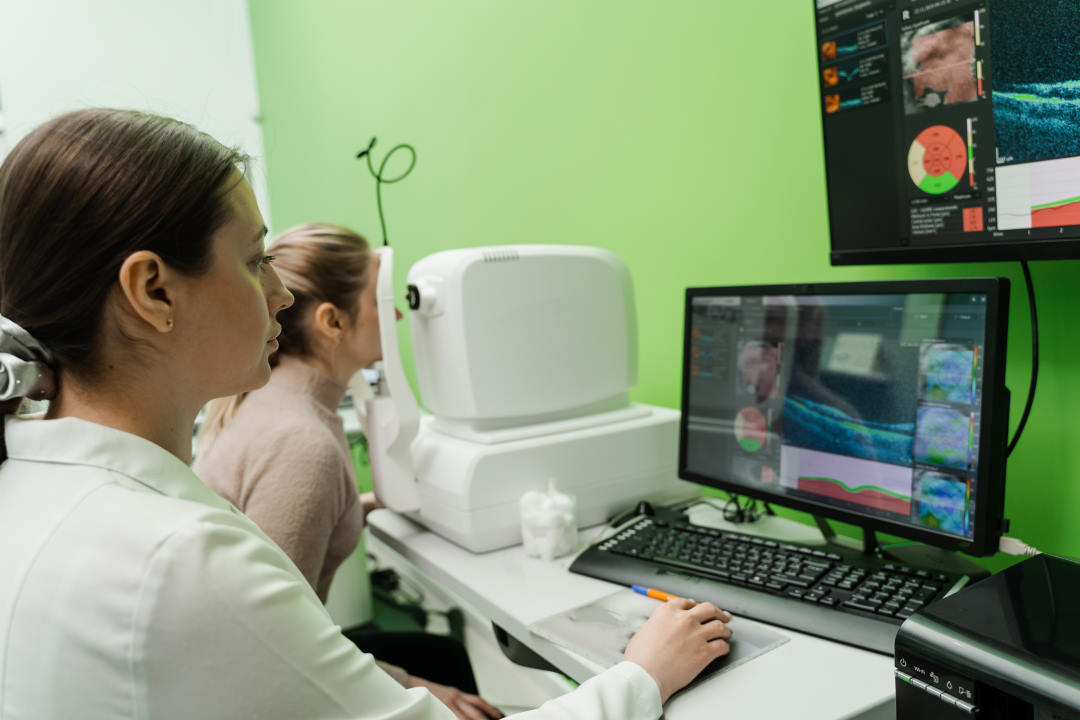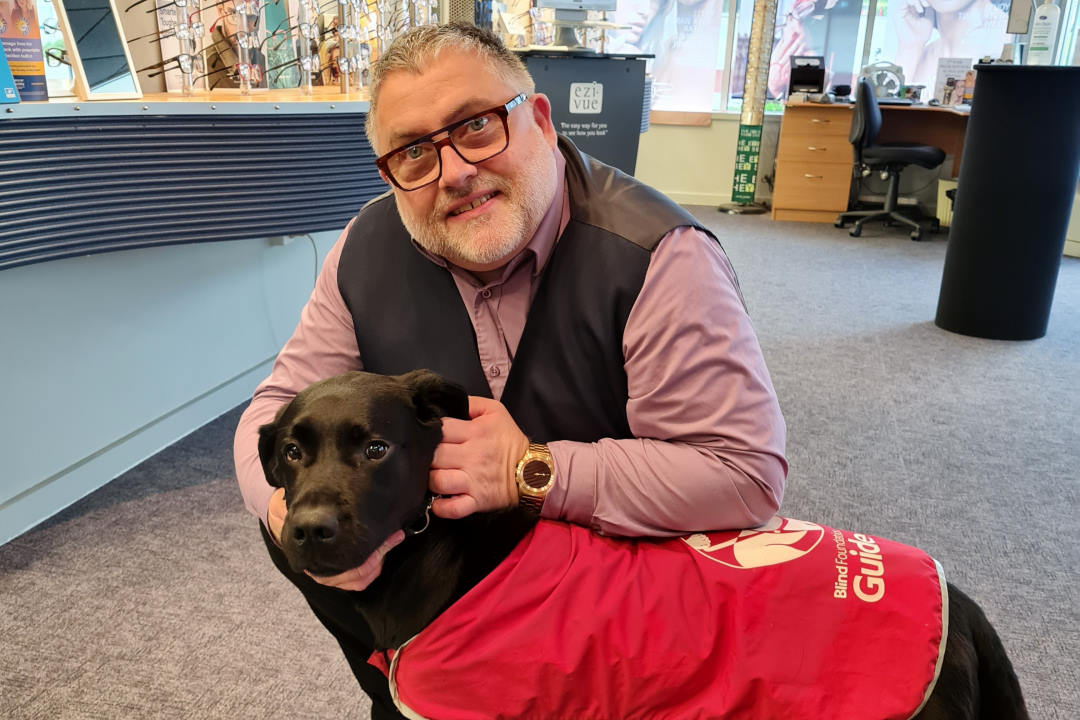Gonioscopy – a closer look at the angle
One of the first challenges of my glaucoma fellowship was mastering gonioscopy and the iridocorneal angle. As you know, there are many indications for performing gonioscopy, including patients potentially at risk for angle closure, determining the cause of intraocular pressure (IOP) elevation in various acute and chronic settings, trauma and examining abnormalities of the iris or iris lesions. Unfortunately, gonioscopy seems underutilised in routine clinical practice1. Not only are there a multitude of anatomical variations from patient to patient, but the procedure can prove challenging on select patients. I’ll share some key pearls gleaned from mentors in my attempts to master the iridocorneal angle.
Anterior chamber anatomy
Let’s start with an appreciation of ‘normal’ angle anatomy, which can be extremely variable in colour and appearance.Visualising the pupil first, then following the iris out to the ciliary body is a good starting point. Moving anteriorly, the scleral spur, a projection of scleral tissue, will appear as a white band. There tends to be little variation in the colour of the scleral spur between patients, making this a good landmark. The trabecular meshwork is adjacent to the scleral spur and will often appear grey or pink with a ‘meshy’ appearance. If there is pigment in it, the trabecular meshwork may appear to have two distinct layers. Schwalbe’s line is the termination of Descemet’s membrane. In some patients, it is not easy to identify. The area anterior to Schwalbe’s line shows reflections off the cornea. Iris processes are found in 35% of normal eyes and typically extend from the peripheral iris to the ciliary body or scleral spur.
The view
Once the anatomy is appreciated, gonioscopy should, in theory, be much easier to interpret. Always remember to perform gonioscopy after applanation tonometry to ensure that the IOP is not artificially modified. Most clinicians perform indirect gonioscopy with a four-mirror gonioprism (with or without a flange). The four-mirror prisms, when used with a flange, couples with the cornea and is stable on the eye but does not facilitate indentation gonioscopy. The four-mirror prism without the flange is quick and allows for indentation gonioscopy, but is less stable, and difficult to use in some patients. A two-mirror lens is slower to use, but offers a higher magnification, which makes it the best choice to evaluate discrete characteristics in the angle.
By altering the slit-lamp illumination (diffuse, focal with a broad beam or focal with a narrow beam)and varying the orientation of the light (horizontal and vertical), we can maximise our view to better evaluate subtle characteristics of the angle.
The ‘corneal wedge’ is a useful tool (Fig 1). Using a thin slit of light, inclined from the angle of the oculars, two separate corneal reflections are visible, one on the inner aspect of the cornea and one on the outer. The thin slit also illuminates the interface between the cornea and the face of the opaque sclera. These reflections form a wedge-shaped line termed the “corneal wedge”. The lines of the corneal wedge intersect at Schwalbe’s line. By pointing to Schwalbe’s line, the corneal wedge locates the anterior border of the trabecular meshwork. In lightly pigmented angles or angles with atypical or confusing anatomy, the corneal wedge will help you locate the trabecular meshwork when no other clear landmarks are present.

Fig 1. The corneal wedge points to Schwalbe’s line, the anterior border of the trabecular meshwork. The corneal wedge in this eye has a rounded contour that reflects the rounded interface between cornea and sclera
The corneal wedge is best identified in the superior or inferior mirror because of the inclined vertical slit beam in these mirrors. Manipulate the slit lamp to give an inclined horizontal slit beam to use with the nasal and temporal mirrors2. The inferior angle is the easiest to examine because it is the most open and most pigmented. It is therefore useful to start with the corneal wedge in this region to identify the structures and become orientated with the patient’s anatomy.
In patients with convex irises, the approach to the angle is steep, making the examination more difficult. Asking the patient to look slightly into the examining mirror will enable a view over the iris and into the angle. It is important not to press while the patient’s gaze is shifted towards a mirror as this can cause the angle to appear narrower.
Indentation gonioscopy
Indentation gonioscopy is an essential aspect of the assessment, allowing a dynamic view of the relationship between the iris and the corneoscleral angle. Forbes (1966) described distinguishing between angle closure due to synechiae and angle closure due to apposition. This is an important differentiation, as eyes with appositional angle closure would be expected to do well after laser iridotomy, whereas eyes with extensive synechiae are likely to require alternative surgical intervention. Forbes noted that direct pressure on the cornea from the lens caused aqueous to flush into the angle3, deepening appositionally closed angles and allowing visualisation of the trabecular meshwork (Fig 2.1). Angles closed by synechiae either don’t open or open only partially (Fig 2.2). Keep in mind, at very high intraocular pressures indentation is both difficult and minimally effective. Indentation gonioscopy is effective with lenses with smaller areas of contact such as the Zeiss, Posner, Sussman, and Allen-Thorpe. Lenses such as Goldmann and Koeppe, with large areas of contact, can cause shallowing of the angle during indentation, making interpretation difficult and unreliable. Indentation is also useful in facilitating a deeper view into the angle recess when examining for iridodialysis, foreign bodies, or cyclodialysis clefts.

Fig 2.1. Gonioscopy showing an eye with apposition angle closure. No trabecular meshwork is visible

Fig 2.2. With indentation, parts of the trabecular meshwork are visible but there are broad peripheral anterior synechiae, obscuring visualisation of the remainder of the trabecular meshwork
Anterior segment OCT
You may be familiar with using anterior segment OCT in assessing angles, where the scleral spur is used as the main landmark with anterior segment OCT to measure the angle size. However, locating it can sometimes be difficult and in up to 25% of patients it can’t be identified4. Apposition between the iris and anterior chamber angle beyond the scleral spur is considered angle closure. While many studies report anterior segment OCT as a good, non-invasive and quantitative method for assessing narrow angles, it is not as sensitive or specific for angle closure as gonioscopy when performed by an experienced clinician5. Anterior segment OCT also does not enable the clinician to evaluate other important angle characteristics, which can influence the subsequent management of patients.
As mentioned, gonioscopy is a useful tool, not only in the initial assessment for glaucoma, but also in a variety of clinical settings. Once the techniques are mastered and there is an understanding of the angle and interpreting anatomy, it can assist in diagnosis of a variety of ocular conditions.
Trauma
Angle recession can result from severe blunt trauma in which a tear occurs in the face of the ciliary body, usually between the longitudinal and circular muscle. Tears can occur over a limited area or may involve the entire angle. If greater than two thirds of the angle is involved, there is a 10% risk of developing glaucoma months or even years after the injury. Gonioscopic examination shows a wide ciliary body band and the ciliary face may appear lighter in the recessed area because there is little ciliary tissue overlying the sclera. If a linear defect is seen at the ciliary body face, a cyclodialysis cleft should be suspected6. It is useful to compare eyes to determine if the ciliary body band appears abnormally wide in one eye (Fig 3).

Fig 3: Angle recession (arrow) demonstrated in the angle post blunt trauma
Vascularisation
Normal blood vessels are found in the anterior chamber angle in 62% of blue eyes and 9% of brown eyes7. It is rare to see a blood vessel run the entire quadrant length of the angle, but it’s more common to see a small segment of the blood vessel. It is important to differentiate normal blood vessels from neovascularisation of the angle. Normal iris blood vessels are never attached to structures anterior to the scleral spur. They are also thick and have a definite pattern (circumferential or radial). Neovascular vessels are fragile in appearance, thinner and tend to be erratic, not respecting the radial of circumferential pattern of iris blood vessels. They may often be seen to extend past the scleral spur into the trabecular meshwork (Fig 4.1).

Fig 4.1. Neovascularisation seen in a patient with neovascular glaucoma
Uveitic glaucoma
Anterior synechiae, adhesions of the iris to the trabecular meshwork, may form following uveitis or an angle closure attack. Synechiae caused by angle closure are mostly found in the superior quadrant since the superior angle is the narrowest. Synechiae associated with inflammation are more commonly found in the inferior angle due to increased inflammatory debris which moves downwards due to gravity2. It is important to differentiate between synechiae and a closed angle. Indentation gonioscopy is essential in such cases. If synechiae are present, the iris will remain opposed to the trabecular meshwork and an anatomically narrow angle in the absence of synechiae will appear wider.
Fuchs heterochromic uveitis (FHU) in its classic presentation is a unilateral, chronic, low grade, often asymptomatic anterior uveitis, characterised by a classic triad of iris heterochromia, cataract and keratic precipitates. Secondary open-angle glaucoma occurs in approximately 15% of the cases2. Atypical neovascularisation of the iris and the anterior chamber (AC) angle (radial and circumferential) occurs in 6-22% of cases. Gonioscopy reveals multiple fine vessels that cross the trabecular meshwork (Fig 4.2). These vessels are distinct from those seen in iris neovascularisation, they are not associated with a fibrous membrane and usually do not lead to PAS and secondary angle closure. However, these vessels are fragile, and can sometimes lead to a characteristic filiform haemorrhage, either spontaneously or with trauma, including with cataract or glaucoma surgery where the phenomenon is known as Amsler-Verrey sign2.

Fig 4.2. Neovascularisation seen with Fuchs heterochromic iridocyclitis
References
1. Fremont AM et al. Patterns of care for open-angle glaucoma in managed care. Archives of Ophthalmology 2003;121:777-83.
2. https://www.aao.org/disease-review/color-atlas-of-gonioscopy
3. Forbes M. Gonioscopy with indentation. A method for distinguishing between appositional closure and synechial closure. Arch Ophthalmol. 1966;76:488–492
4. Narayanaswamy A et al. Diagnostic performance of anterior chamber angle measurements for detecting eyes with narrow angles: An anterior segment OCT study. Arch Ophthalmol 2010;128(10):1321-7.
5. Khor WB et al. Evaluation of scanning protocols for imaging the anterior chamber angle with anterior segment-optical coherence tomography. J Glaucoma 2010;19(6):365-8.
6. Steven V L Brown et al. Transscleral Diode Laser Therapy for Traumatic Cyclodialysis Cleft. Ophthalmic Surgery, Lasers and Imaging Retina. 1997;28(4):313-317
Images:
Fig 1: https://www.aao.org/disease-review/techniques-of-slit-lamp-gonioscopy
Fig 2.1 and 2.2: https://www.aao.org/disease-review/techniques-of-slit-lamp-gonioscopy
Fig 3: https://clinicalgate.com/iris-and-pupils/
Fig 4.1: https://www.aao.org/disease-review/color-atlas-of-gonioscopy and 4.2: https://www.aao.org/disease-review/abnormalities-associated-with-an-open-angle
Dr Kaliopy Matheos is a glaucoma fellow in Auckland. In July, she will continue with her specialist training in Toronto, Canada, as the glaucoma & anterior segment fellow at the University of Toronto.





